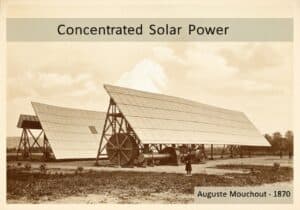The data frame (`data.frame`) is the fundamental data structure in R for storing tabular data. It is a list of vectors of equal length, where each vector represents a column and can be of a different data type (e.g., numeric, character, factor). This structure is ubiquitous in R for statistical modeling and data manipulation, mirroring the rectangular format of datasets.
The R Data Frame
- John Chambers
- Rick Becker
- Allan Wilks
The data frame is arguably the most important data structure in R. It was designed to closely represent the kind of data tables used by statisticians: observations in rows and variables in columns. Technically, a `data.frame` is a list where each element is a vector representing a column. A key constraint is that all these vectors must have the same length, ensuring the rectangular shape of the data. However, unlike a matrix, each column can have a different data type. For instance, one column could contain numeric measurements, another could contain character strings (like names), and a third could contain factors (categorical variables).
This flexibility is crucial for real-world data analysis. Data frames have row and column names, making it easy to subset and reference data in an intuitive way (e.g., `my_data[,”age”]` or `my_data[5,]`). Many of R’s built-in functions, especially for statistics and plotting, are specifically designed to work with data frames as their primary input. The development of more efficient and user-friendly alternatives, like the `tibble` from the Tidyverse or the `data.table`, builds upon the foundational concept of the data frame, highlighting its central role in the R ecosystem.
Typ
Unterbrechung
Verwendung
Vorläufersubstanzen
- The concept of arrays and matrices in programming
- Statistical data tables used in manual analysis
- Data file structures from other statistical packages like SAS and SPSS
- The list data structure in Lisp-like languages
Anwendungen
- storing and manipulating datasets for statistical analysis
- input for modeling functions like lm() for linear regression
- data wrangling and transformation using packages like dplyr
- creating visualizations with ggplot2, which is designed around the data frame concept
Patente:
Mögliche Innovationsideen
!Professionals (100% free) Mitgliedschaft erforderlich
Sie müssen ein Professionals (100% free) Mitglied sein, um auf diesen Inhalt zugreifen zu können.
VERFÜGBAR FÜR NEUE HERAUSFORDERUNGEN
Maschinenbauingenieur, Projekt-, Verfahrenstechnik- oder F&E-Manager
Kurzfristig für eine neue Herausforderung verfügbar.
Kontaktieren Sie mich auf LinkedIn
Integration von Kunststoff-Metall-Elektronik, Design-to-Cost, GMP, Ergonomie, Geräte und Verbrauchsmaterialien in mittleren bis hohen Stückzahlen, Lean Manufacturing, regulierte Branchen, CE und FDA, CAD, Solidworks, Lean Sigma Black Belt, medizinische ISO 13485
Wir suchen einen neuen Sponsor
Ihr Unternehmen oder Ihre Institution beschäftigt sich mit Technik, Wissenschaft oder Forschung?
> Senden Sie uns eine Nachricht <
Erhalten Sie alle neuen Artikel
Kostenlos, kein Spam, E-Mail wird nicht verteilt oder weiterverkauft
oder Sie können eine kostenlose Vollmitgliedschaft erwerben, um auf alle eingeschränkten Inhalte zuzugreifen >Hier<
Verwandte Erfindungen, Innovationen und technische Prinzipien












